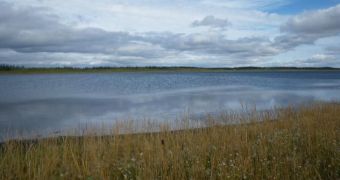Except for people who live in smack in the middle of nowhere and folks who choose to remain oblivious to what is happening to the world around them, pretty much everybody knows that climate change is reshaping our planet's ecosystems.
Writing in the journal Geophysical Research Letters, scientists with McGill University and the United States Geological Survey explain that this man-made phenomenon is now cooking up a new permafrost in Alaska.
This new permafrost is forming around the state's Twelvemile Lake, and its coming into being is due to the fact that, as a result of environmental changes, said body of water has shrunk to a considerable extent over the past three decades.
Specifically, the McGill University and the United States Geological Survey researchers say that, according to their measurements, Twelvemile Lake is now roughly 5 meters (approximately 15 feet) shallower than it was not very long ago.
As detailed in the journal Geophysical Research Letters, the fact that Twelvemile Lake is now smaller than it used to be means that willow shrubs can thrive on its newly exposed shores. It is these shrubs that are creating the permafrost by cooling and drying the soil beneath them.
“Observations reveal patches of recently formed permafrost within the dried lake margin, collocated with discrete bands of willow shrub,” the scientists behind this research project write in the Abstract for their paper.
What might make some people scratch their heads is the fact that, as shown by previous investigations, climate change and global warming are masters of causing permafrost to thaw, and also not ones to try and make amends for it by creating new ones in other regions.
Still, the McGill University and the United States Geological Survey explain that the formation of this new permafrost around Alaska's Twelvemile Lake is nothing but a hiccup that climate change and global warming will themselves deal with in the near future.
Thus, based on how thick this new permafrost is – and, by the looks of it, it really isn't all that thick, scientists expect that it will probably disappear by the end of the century as a result of the increase in global average temperatures.
“Model results indicate that permafrost aggradation is transitory with further climate warming, as new permafrost thaws within seven decades,” the researchers explain in the journal Geophysical Research Letters.
It is estimated that, in order for the new permafrost in Alaska to disappear on its own accord, temperatures in the Arctic need to increase by about 3 degrees Celsius. Under a business-as-usual scenario, chances are this will come to happen.

 14 DAY TRIAL //
14 DAY TRIAL //